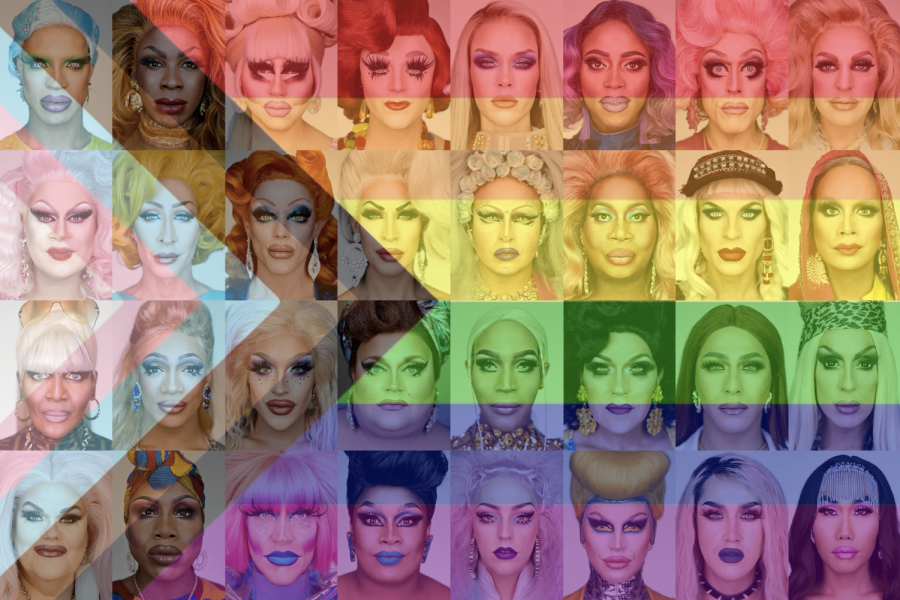The Influence of Drag and the LGBTQ+ Community
Photo Credit: Collage and photo by Ayla DeBord, Pride flag photo from qz.com, Drag photo from Vulture.com
A collage of several influential Drag Queens. What Drag is all about and the communities involved.
September 18, 2020
The flash of colors, the abundance of confidence, the sparkle of energy, the unmatched sass, Drag Queens. The history of drag is a long one. The earliest record of drag goes back to the 17th century with the man himself, Shakespeare. Women weren’t allowed to be actors so every female role in Shakespeare’s plays were always played by men. The term “drag ” originated in the theater. According to Allthatsinteresting.com, male actors playing female roles would talk about how their dresses would drag across the floor behind them.
From the 17th century to now, the art of drag has changed drastically. Modern day drag is practiced by people of all gender identities. The art of drag has taken the world by glitter and pazazz. RuPaul’s Drag Race is one of the biggest reality TV shows and there are countless influencers who are known for their drag performance. Trixie Mattel, Valentina, Bob The Drag Queen, Bianca Del Rio, and Nikita Dragun are only a few of many influencers who took the Drag industry to where it is today. What is so cool about the drag industry is that it is composed of many other industries as well, the makeup industry, the fashion industry, as well as the performing arts industry. The art of drag is definitely not something you want to mess with if you aren’t serious about it. It takes hours and hours to complete a full look. And with hair, makeup, and the fashion, it is a very expensive lifestyle.
We all know that art is subjective. And like any art form there are people who criticize it. Because drag is so embedded in the lgbtq+ history, it has been put down and ridiculed by homophobic and transphobic people. Some believe that men who participate in drag aren’t “real” men, which is far from the truth. A big message preached by the drag community is that Men can be feminine. Men can and should be in touch with their feminine side and nothing about that makes them any less of a man than a man who doesn’t do drag or isn’t lgbtq+. The drag community has also been greatly impacted by the trans community. Though anyone can practice drag, the trans community has really used their platform of drag to elevate trans voices and educate others about being transgender and self identity. Some of the drag industries’ greatest queens are transgender and without them drag wouldn’t be nearly as successful as it is today.
One thing that is being talked about in the news lately is the Black Lives Matter movement and homophobia and transphobia. To stand with BLM you can not pick and choose which black lives to care about. You can’t leave out black trans women, black trans men, or any black person in the LGBTQ+ community. This is only one out of many topics that both the Trans and drag community help to educate others on. The drag community as a whole also does a lot to inform the general public about homophobia and what you can do to be a good ally.
Down to its core, drag is really all about being yourself and not caring what other people think of you. It’s about self love and exploring the things that make you unique and letting them shine. The drag community is probably one of the most welcoming communities you could ever be a part of and witness. A lot of that is because it is a community filled with people who know what it’s like to feel like an outcast and who also know that loving yourself is just as important as loving others.



